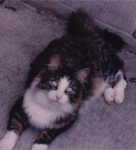.
-
desiderata
- Posts: 113
- Joined: Tue Feb 28, 2017 6:51 am
Re: Centrals :-(
Hi, first of all... 2007? Is your friend just deciding now to get therapy?
I wouldn't be too concerned yet about the 'centrals' as many people have a few on dozing off and just before waking... they're 'clear airway' events and not necessarily true 'centrals'. I'd be more concerned that his 02 sats did drop during the testing, but otherwise the numbers are pretty good as tests go.
Easy to say it probably would be a good idea to get a new study if affordable, certainly a lot's changed in 10 yrs technically, but it depends on how they feel about things. Again, what happened between now and then?
I wouldn't be too concerned yet about the 'centrals' as many people have a few on dozing off and just before waking... they're 'clear airway' events and not necessarily true 'centrals'. I'd be more concerned that his 02 sats did drop during the testing, but otherwise the numbers are pretty good as tests go.
Easy to say it probably would be a good idea to get a new study if affordable, certainly a lot's changed in 10 yrs technically, but it depends on how they feel about things. Again, what happened between now and then?
_________________
| Mask: Ultra Mirage™ Full Face CPAP Mask with Headgear |
| Humidifier: IntelliPAP Integrated Heated Humidifier |
Re: Centrals :-(
I assume that the notes on the report were written by a doctor or sleep therapist?
That they are 'transitional centrals', does that mean they are not as serious? It looks like it is a cluster occurring over approximately 1/2 hour.
That they are 'transitional centrals', does that mean they are not as serious? It looks like it is a cluster occurring over approximately 1/2 hour.
_________________
| Machine: ResMed AirSense™ 10 AutoSet™ CPAP Machine with HumidAir™ Heated Humidifier |
| Mask: DreamWear Nasal CPAP Mask with Headgear |
Using weight loss, general exercise, and tongue/throat exercises I managed to get my AHI down to approx 5.
Not using a machine currently.
Not using a machine currently.
Re: Centrals :-(
broadly speaking, yes.Mogy wrote:That they are 'transitional centrals', does that mean they are not as serious?
https://www.ncbi.nlm.nih.gov/pmc/articles/PMC3417331/Sleep Transition Apnea
Sleep transition apneas refer to the fluctuations in ventilation that occur in otherwise normal individuals during the transition from wake to sleep.1 The pathogenesis of these apneas involves arousal from sleep, which is associated with an augmentation of ventilation,55,56 particularly immediately after waking up. In normal individuals with a PaCO2 = 40 mm Hg during wakefulness, PaCO2 = 45 mm Hg during stable non-rapid-eye-movement sleep. When these individuals wake up from sleep, they typically hyperventilate and drive down their PaCO2 to values below their normal awake eupnic PaCO2. If this rise in ventilation yields a PaCO2 below the so-called apnea threshold,8 then a cessation of breathing is predictable. Frequently, transient arousals from sleep occur and are followed by resumption of sleep, but the associated augmentation in ventilation leads to central apnea upon resumption of sleep.
Last edited by palerider on Sat Mar 11, 2017 12:25 pm, edited 1 time in total.
Get OSCAR
Accounts to put on the foe list: dataq1, clownbell, gearchange, lynninnj, mper!?, DreamDiver, Geer1, almostadoctor, sleepgeek, ajack, stom, mogy, D.H., They often post misleading, timewasting stuff.
Accounts to put on the foe list: dataq1, clownbell, gearchange, lynninnj, mper!?, DreamDiver, Geer1, almostadoctor, sleepgeek, ajack, stom, mogy, D.H., They often post misleading, timewasting stuff.








